Lucena, Sunday, June 31, 2007
We often checked our book Jewish Spain; A Guide for Jewish sights along our primary route. Since the book indicated a church called by the locals “la Sinagoga” and that the town had been the location of an important yeshiva, we decided to stop and take a look at Lucena which happened to be on the drive from Córdoba to Málaga.
A Yeshiva in Lucena? A seminary in Cincinnati?
When we explain to people that we studied for the rabbinate at the oldest continuously functioning yeshiva in the world: Hebrew Union College-Jewish Institute of Religion in Cincinnati, Ohio they often ask:
Why is there a yeshiva in Cincinnati of all places?
The fact that at the time of its founding in 1875, the city had the second largest Jewish population in the United States and that it was the first stop along the Ohio river after crossing the Allegheny mountains on the way to St. Louis on the Mississippi river, gives some explanation as to why the College-Institute was founded there. So, when we drove the 70 kilometers from Córdoba south to Lucena and we first saw the city from the two-lane road that leads in from the main North-South highway
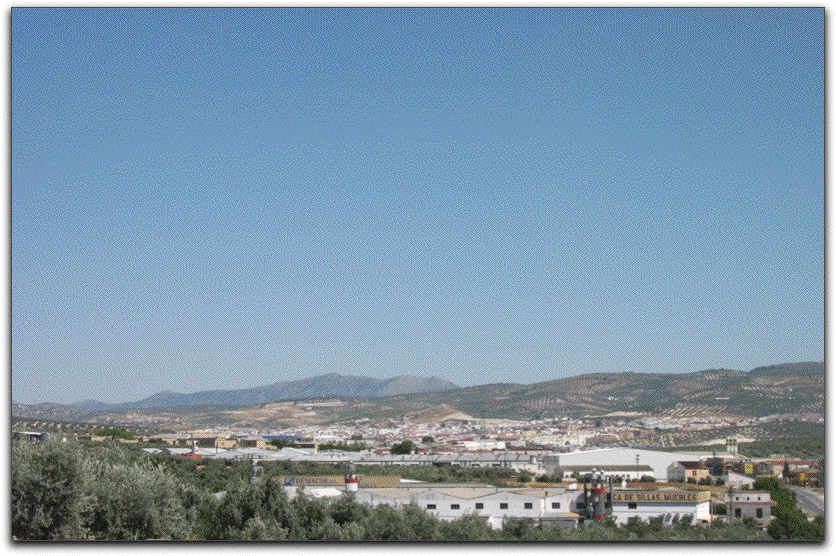
Mark asked:
Why was there a yeshiva in Lucena of all places?
Today, Lucena is a small, but growing city (with absolutely no Jews) that seems off the beaten path. However, during the eleventh century it was sometimes known as “Lucena of the Jews,” and, according to at least one source, the respected Arab geographer Muhammad al-Idrisi, at one time only Jews lived within its walls while the Muslims lived beyond. The old city is high on a hill above the Lucena river with olive groves and farm fields all around. Why Lucena was chosen by Isaac alFasi a the site of his yeshivah instead of Córdoba, where he first settled in Spain, or Granada, to which he went from Córdoba, is not known. We do know that a younger contemporary Isaac ibn Ghiyyat was born in Lucena and may have already been teaching there. This might have been an incentive. At the time, Córdoba was near the height of its influence,
Córdoba Today
To give a sense of their relative scale, even then, the red circle superimposed on Córdoba is the size of the “metropolitan” area of the current city of Lucena. Included in the red circle is all of the “Old City” and a tiny portion of the area beyond the medieval walls. The campsite where we stayed is about two centimeters beyond the circle… if you follow the line that leads diagonally barely to the left from the top of the circle. Both cities are viewed from the same elevation.
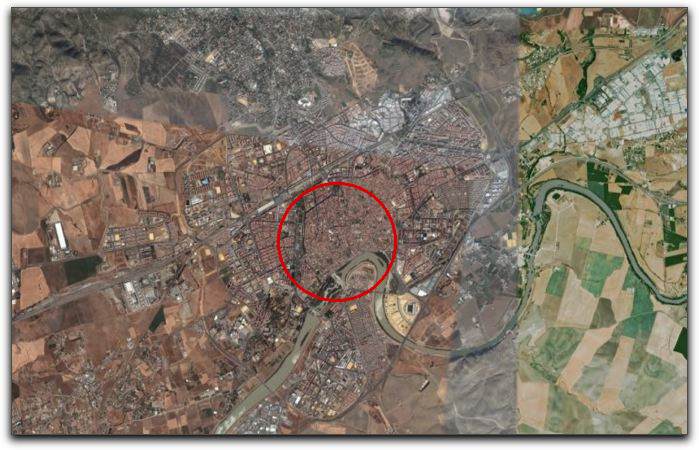
Lucena Today

This small town, a day’s travel away from Cordoba, was chosen by Judah ha- Levi’s father for his son’s studies, by Rambam’s father who learned there, and Moses ibn Ezra who studied with ibn Ghiyyat. This center of learning in Spain boasted that it was the first Spanish center to correspond with the great Babylonian Talmudic centers of Sura and Pumbedita. According to Jane Gerber, the Sephardic rabbinic curriculum which combines Talmudic with secular studies, began here. It may have been because it was a center of Jewish learning that ibn Rushd came here when he was banished from Córdoba towards the end of the twelfth century.
We wanted to see what we could find.
Stocking Up
The red circle superimposed on the Google Earth picture of Lucena above is of the Carrefour a bit outside of town. We did our shopping and started into town. From right outside the store complex it’s clear that Lucena is experiencing a boom.
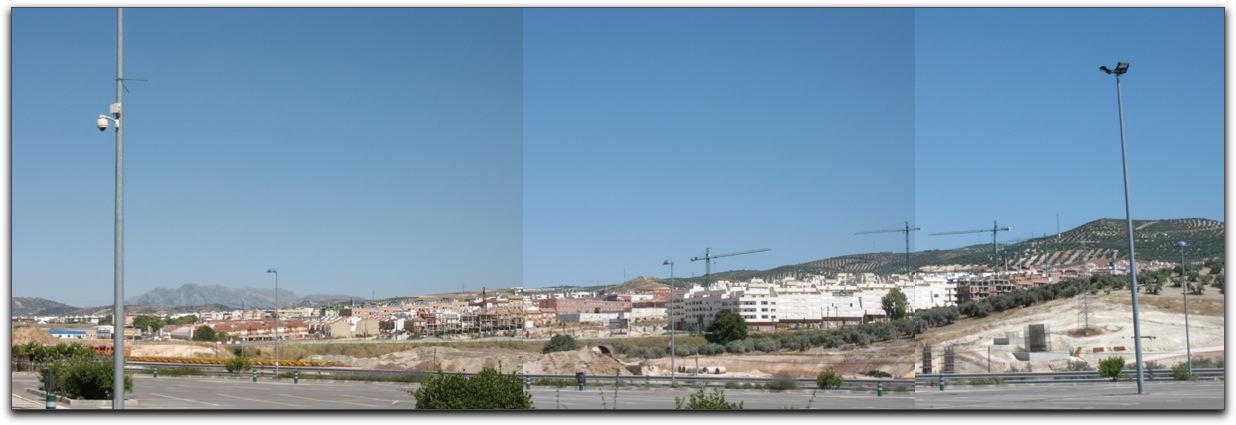
Looking for a synagogue?
It seems that in Lucena (as in Amusco) people go to the “synagogue” for the food and the camaraderie
We drove up into the old town and found our way to the central square. when we were about a block away from it Debbie exclaimed that she saw a sign for a synagogue. We easily found a parking spot in the nearly deserted square and walked the half-block to where Debbie had seen the sign. Indeed, it read “sinagoga” but it was for restaurant, once again.
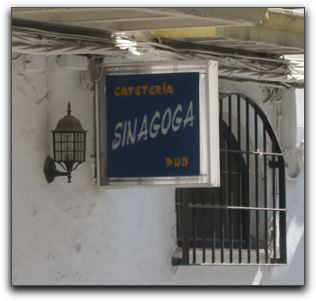
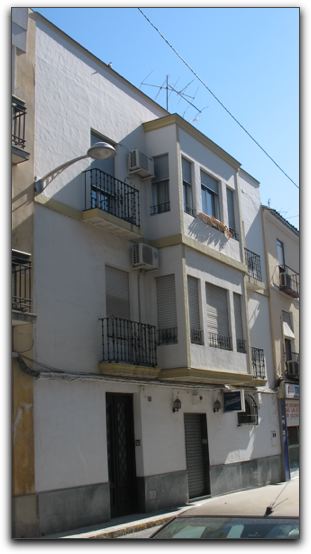
From the outside we could not tell whether the building had ever been a synagogue and we could not find anyone to ask.
What else?
Marks’ father used to say something to the effect:
Learning is like a spider weaving a web or a fisherman adding knots to his net. The more you add, the more you catch.
Learning is self-reinforcing. He would have loved the World Wide Web.
We looked around the square and could see nothing that gave a hint of there having been anything related to a Jewish presence. The “info station” was not of much help.

Though later, when we examined the photo of the sign and checked the Web, we learned that the “Route of the Caliphate and the Andalucían Legacy” pictured there attempts to encourage people to explore a number of the cities through which we had traveled from Granada to Córdoba and beyond, and thereby increase understanding of the past Muslim involvement in the area. Though we had not intentionally traveled the route, it turns out that we had touched most of the towns on it. Many of the cities and villages that would have been meaningless to us only a week before, we had visited, leaving us with broader associations in relation to their role in the history of Spain.

- Víznar
- Afalcar
- Alcalá la Real
- Castro del Rio (where we stopped for a moment to look into a museum devoted to olive oil… that was busy hosting a private party, so we drove on)
Around on the other side of the square was a large old building.
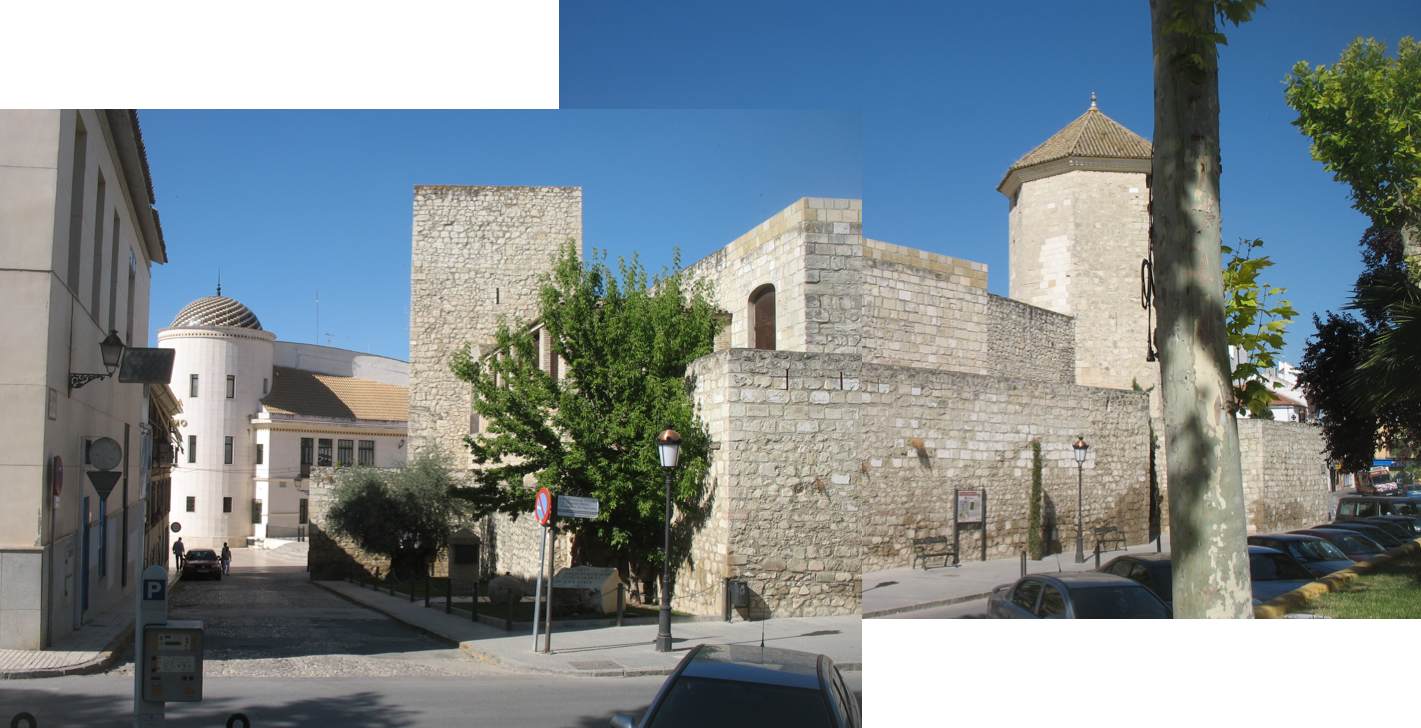
Yes, that’s our gray van parked on the far right edge of the photo. When we got closer we could see that it was the “MVSEO ARQVEOLOGICO Y ETNOLOGICO DE LVCENA which has a very nice Web site with a significant page in Spanish about the Jewish experience in Lucena. Needless to say, Sunday afternoon, it was closed.
We continued on our way to Málaga, hoping that our travels would continue to enlighten us about the Jewish experience.
start || back || next










